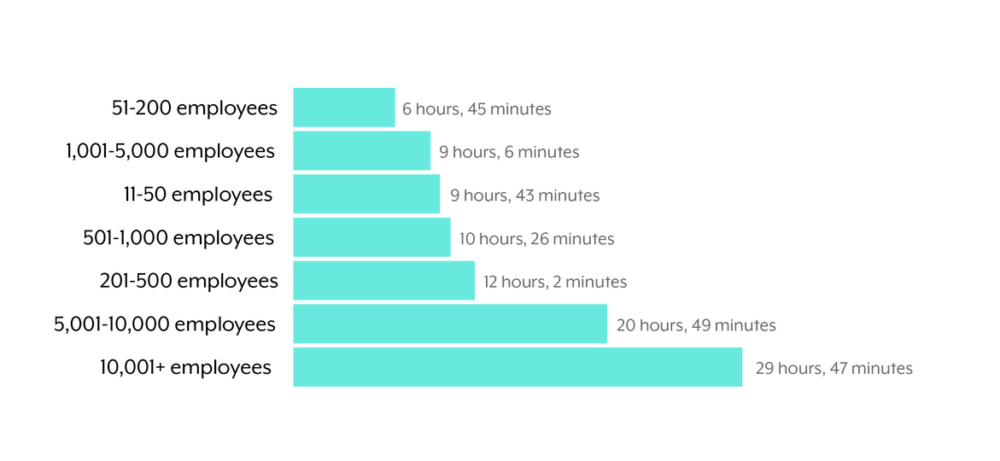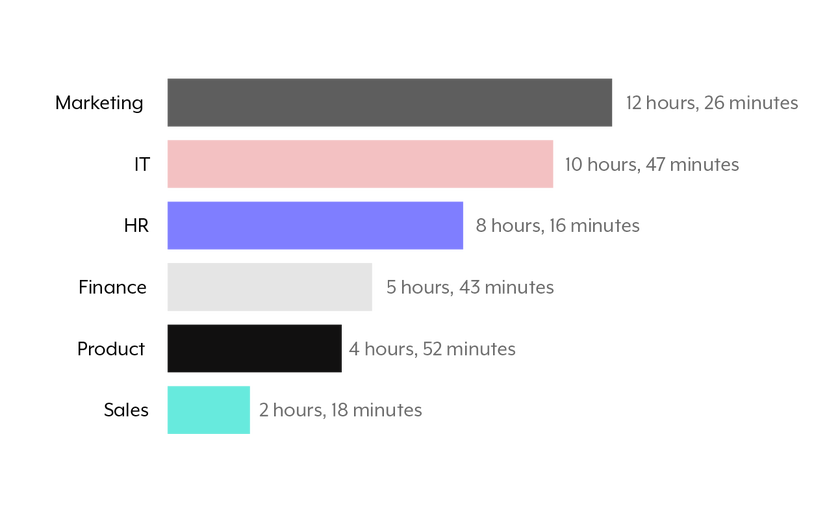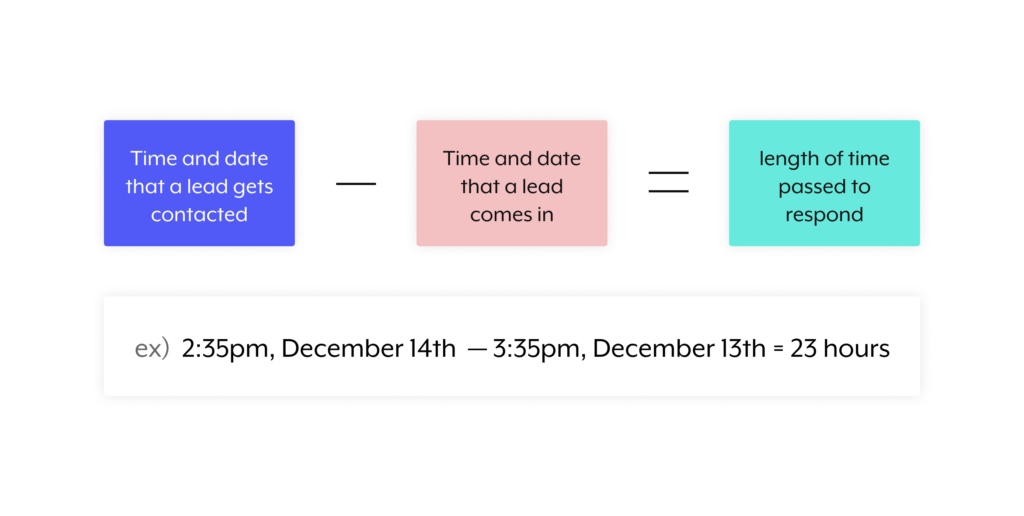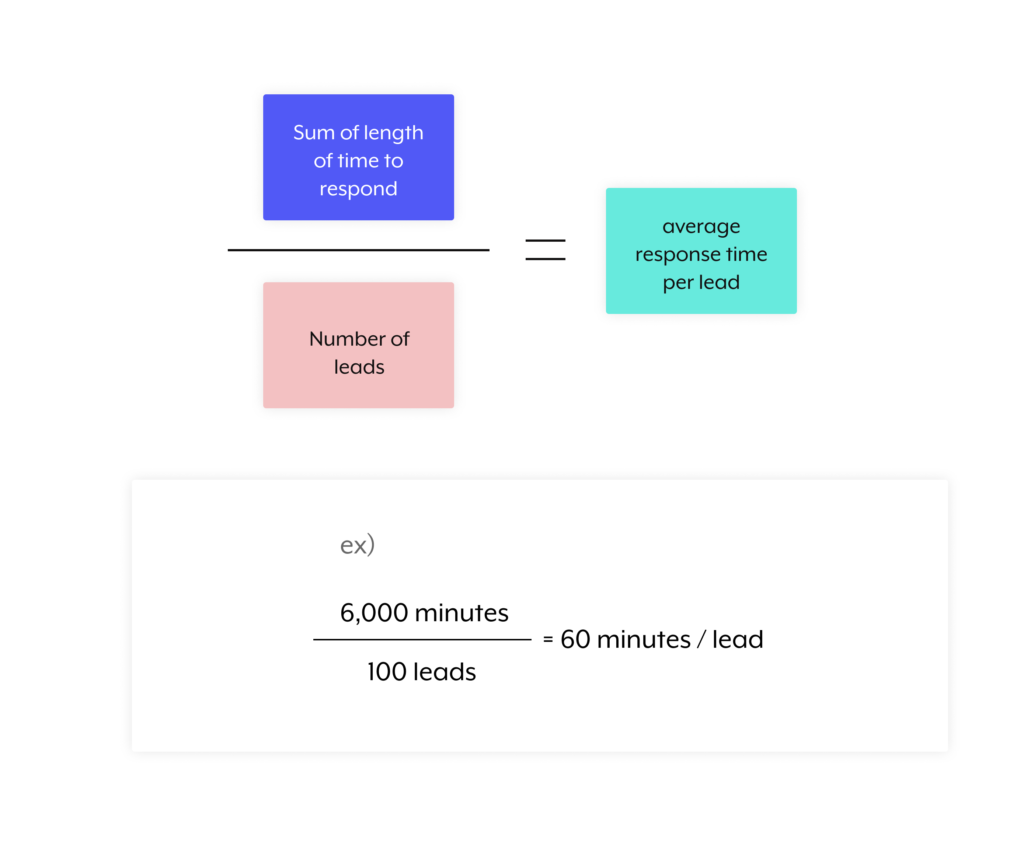B2B companies across sizes and industries take hours to respond to inbound leads.
How do we know?
We ran our own experiment by filling out demo request forms for 114 leading B2B companies, where each form submission used real credentials and information that aligned with the respective company’s target audience.
Here’s a look at the results for companies of different sizes:

And here’s how the results shaped up at the industry level:

We’ll explain why these slow lead response times are problematic, and we’ll offer up a few solutions to improve yours. But first, we’ll give some background by defining lead response time.

Want to see what else we uncovered?
You can access all of the findings by downloading our State of Inbound Lead Management.
What is lead response time?
Lead response time is a sales metric that measures the length of time it takes for a sales rep to follow up with an inbound lead, starting from the moment that lead contacts your business; the lead’s initial touchpoint can take the form of an email, a phone call, or a form submission.
To calculate your lead response time for a specific prospect, you’ll need to perform the following:
The average lead response time for your sales team builds on the previous calculation:
Why is a slow lead response time an issue?
A slow speed to lead can hurt your business in all sorts of ways. Here’s a look at some of these adverse outcomes:
- Your reps fail to qualify prospects.
According to a study by the Harvard Business Review, sales reps that take 24 hours or longer to respond to inbound leads are a whopping 60x less likely to qualify prospects than those that respond within an hour. This obviously has downstream effects, as it prevents reps from moving prospects further along the buying funnel.
- Your prospects receive a poor experience.
When prospects reach out to your business, they’re often looking for a solution that can address their pain points, quickly.
By delaying your response time, you’re only making it difficult for the prospect to solve whatever pain they’re experiencing. In response, they’re either left waiting for your help, or they’re forced to reach out to another vendor—both of which are less than ideal for your prospects.
- You lose sales to rivals.
In many cases, your prospects are evaluating you against your competitors.
A slow response time is, in and of itself, enough for you to lose competitive deals: A vendor picks the organization that responds to them first 50% of the time.
How to improve your lead response time
In most cases, your sales reps simply aren’t empowered to respond to leads quickly. Perhaps it’s because your organization’s lead routing workflow is slow-moving; or your reps have to perform additional research themselves before they feel comfortable reaching out.
To address these issues, among many others, you can turn to the following strategies:
1. Account for geography when routing leads
The ability to route a lead to a rep while they’re working is intuitive, but the importance in doing so can’t be understated. If ignored, your prospects might be forced to wait hours before hearing back, which as we’ve mentioned, comes to the detriment of your business, employees, and prospects.
2. Provide reps with leads that cater to their strengths
Your reps likely have specific areas of expertise. Some, for instance, have more success with enterprise accounts in the software space, while others tend to shine with smaller businesses in specific niches within software.
You can help your reps get excited about the leads they receive as well as feel more confident in responding to each by giving them those that align with their unique strengths.
3. Leverage a chatbot that can share leads in your business comms platform
If your employees (including your sales reps) are like most, they’re using your business communications platform for a significant amount of time every day—whether it’s Slack or Microsoft Teams. Case in point: Slack’s average user at a paid account spends 90 minutes per day actively using the platform, and they have the app open for more than 9 hours per day.
This makes a business communications platform the ideal place to share leads with individual reps. And by using customizable chatbots, you can not only streamline the process of sharing leads on this platform, but also provide reps with the contextual insights they need to act quickly.
Lead Bot, a customizable chatbot powered by Workato, can help your reps become aware of leads in near real-time via your business communications platform. Within the message, Lead Bot shares the information your reps need, and it allows them to take action with the click of a button.
Here’s more on how it can work:


